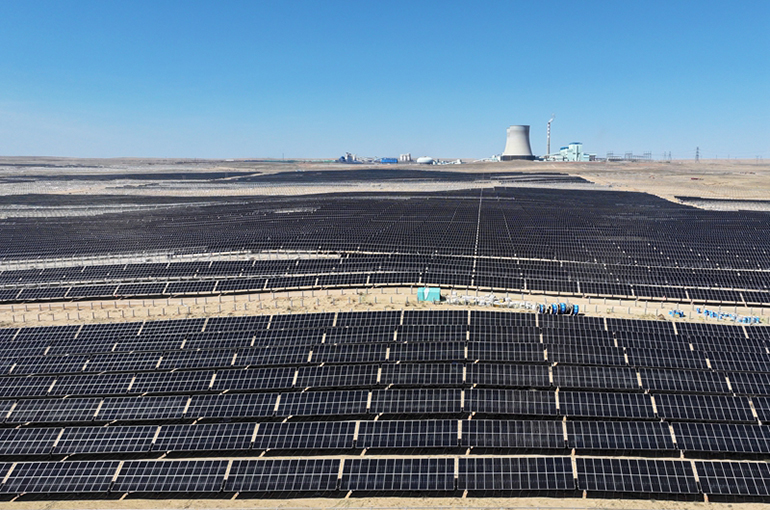 Chinese Wind, Solar Projects Shut Amid Shift to Market‐Based Pricing
Chinese Wind, Solar Projects Shut Amid Shift to Market‐Based Pricing(Yicai) June 6 -- Many wind and solar power projects have been halted across multiple Chinese regions just months after China unveiled a new policy to push such renewable energy sources to fully enter the electricity market, shifting to market dominance prices.
Starting June 1, renewable energy sources, including wind power and photovoltaics, entered a new market-oriented pricing system based on transactions and competition, with electricity firms deciding prices via bidding.
The National Development and Reform Commission and the National Energy Administration vowed to promote the comprehensive entry of wind and solar power into the electricity market, with renewable energy pricing shifting from a guaranteed purchase model to market dominance.
"After the policy was released, the industry expected a downward trend in electricity prices," a senior official from a state-owned new energy investment company told Yicai. The price is a core factor influencing renewable energy projects' return on investment, and after detailed calculations and assessments, the expected rate of return for some projects is no longer economically feasible, the person noted.
On April 9, Power Construction Corporation of China halted its 51-gigawatt solar module tender for this year due to the impact of recent policy changes on prices and procurement needs. The project was hailed as the "largest in China's history."
On May 12, the energy administration of Shanxi province issued a notice scrapping 14 wind and solar power projects with a total capacity exceeding 590,000 kilowatts.
Several other provinces, including Ningxia, Shaanxi, and Fujian, have also launched investigations into the construction status of renewable energy projects and shut several unfinished ones, Yicai found.
The reasons for so many projects to be scrapped are complex, but overall, the tightening policies are the key factor, the senior official pointed out.
With the rapid development of the renewable energy industry, the Chinese government has introduced a series of stricter policies regarding industrial planning, environmental protection requirements, and grid connection and consumption. These adjustments have placed higher standards and stricter regulations on firms during project development and construction.
GD Power Development, Huaneng Power International, and other listed companies noted in their annual financial reports that as renewable energy enters the electricity market, uncertainties due to new policies and the risk of declining settlement prices may impact their overall profitability.
China's installed renewable power capacity was about 1.41 billion KW as of the end of last year, accounting for more than 40 percent of its total electricity capacity. Previously, the country had committed to the capacity to exceed 1.2 billion KW by 2030, but this rapid expansion has brought several problems.
Some renewable energy projects have been developed in a disorderly manner, which inevitably requires rectification, Lin Boqiang, dean of Xiamen University's China Energy Policy Research Institute, said to Yicai. The large-scale integration of new energy puts considerable pressure on the entire power grid system, he pointed out.
China's newly installed capacity of wind and solar power reached 358 million KW last year, according to official figures. The figure is planned to drop to 200 million KW this year.
Editor: Martin Kadiev